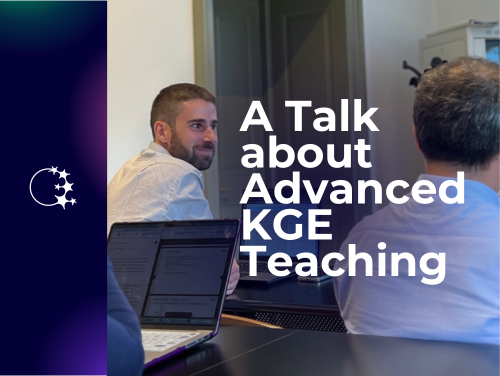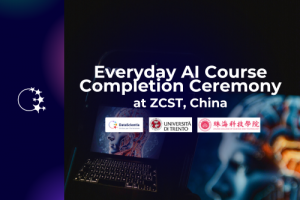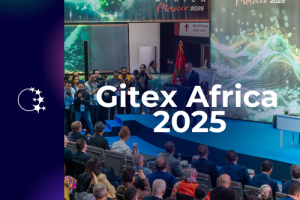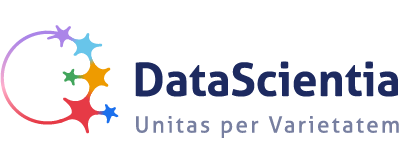
Conversation on Advanced KGE Teaching
- Posted by Tetiana Bihun
- Categories News
- Date May 12, 2025

At DataScientia, we aim to promote and facilitate the advancement of AI that is transparent, reusable, person-centred, ethical, diversity-aware, and truly useful for humanity. One of our key initiatives in this direction is the Knowledge Graph Engineering (KGE) course. This course not only teaches students how to transform fragmented data into structured and meaningful knowledge but also empowers them with the capacity to innovate in AI while staying true to ethical and human values.
Today, we decided to talk to Simone Bocca, LiveData Coordinator at DataScientia, and ask him about the Master’s course in KGE, where he has been a Teaching Assistant at the University of Trento since 2021. Besides, Simone has vast expertise in knowledge graphs, a PhD in Information Engineering and Computer science, and academic experience in Mozambique and Mongolia with local universities. Today, he will share insights on the approach to knowledge engineering for DataScientia and tell us more about what makes the Master’s course on KGE so special.
-
Tetiana: Hello Simone! Could you briefly tell our readers about the core idea of this course?
- Simone: Hello Tetiana, sure, KGE is an advanced course initially designed as a 58-hour curriculum, but it is also offered in a 48-hour format. It’s a master ‘s-level course, so students should already have a background in data management, including databases, logical models, ontologies, and even Python programming for handling data. The course focuses on the principles of data reuse and the creation of Knowledge Graphs (KGs). The course aims to teach how to create data for data services, using a methodology called iTelos, which is constantly being revised for better use, thanks to the feedback of the students of this course. It aims to equip participants with the skills to construct KGs for data services using this methodology.
-
Tetiana: That sounds intriguing. Could you explain a bit more about what the iTelos methodology involves?
- Simone: Certainly. iTelos is a methodology designed to help students learn how to reuse data more effectively. It teaches them how to reduce the cost of creating and combining data, while also supporting a circular data economy that facilitates sharing and reusing data among different users. Furthermore, iTelos is continuously updated based on feedback from students of the course.
-
Tetiana: Thank you for the explanation. Could you also tell us how this course has been shared beyond your university with DataScientia’s partner universities in other countries?
- Simone: This course has been held for many years here, in Trento, Italy, and more recently expanded to China about four years ago, and Mongolia just last year.
-
Tetiana: That’s impressive! So, do you travel to these places to teach?
- Simone: I had the opportunity to teach this course in Mongolia. In China, however, local professors taught independently and used the same materials.
-
Tetiana: But apart from China, Mongolia, and Italy, are there possibilities for expanding the course to other regions?
- Simone: Absolutely, there are possibilities. The course is designed to be adaptable for different universities and countries. The main challenge for future expansion is ensuring institutions have the necessary technical prerequisites. Not every university may currently offer the foundational courses or tools that support the KGE curriculum. However, we will be exploring opportunities for expansion into other regions in the future.
-
Tetiana: Are there plans to make the course more accessible for those with less advanced understanding of knowledge graphs?
- Simone: Yes, we may develop a version of the course that’s more accessible for individuals with a less technical background. This project has the potential to impact the learning experience of non-experts significantly. We plan to introduce semi-automatic tools that allow them to work efficiently with and apply data, enabling students with limited technical expertise to engage with the content effectively. We are working towards this goal and making some progress.
-
Tetiana: How would you explain knowledge graphs to people unfamiliar with them?
Simone: I’ve never really thought about it this way before, but if I were explaining it to my young daughter, who has no background in research, I’d say a knowledge graph is just data that’s all around us, like the air. If you take data seriously, it’s a graph. For example, your connections with friends form a graph in a social network. A knowledge graph represents those relationships. I try to keep it simple so people don’t feel overwhelmed, even if they’re new to the concept.
-
Tetiana: It’s a great and ambitious initiative. Thanks so much, Simone. This has been really insightful. I’m confident many people will be excited to learn about this course. Wishing you all the best in your continued teaching and future endeavours.
- Simone: Thank you, Tetiana.
Through our partnerships with institutions in Italy, China, and Mongolia, we are not just teaching advanced technical skills — we’re building a community of forward-thinking data engineers who will shape the future of ethical AI. We’re excited to expand our DataScientia network, engaging more students and institutions in our mission to create transparent, reusable, and human-centred AI solutions.
Learn more about KGE Course from syllabus
Keywords: Knowledge Graph Engineering, KGE, iTelos, data reuse, iTelos methodology, knowledge graphs, KG, Master’s course, data services, data management, global education, China, Mongolia, data science, AI innovation, international collaboration.

────────────────
Tetiana Bihun
Author, Content Creator
Tag:LiveData
You may also like

AI4Everyone Erasmus+ Project Kicks Off in Nicosia

Everyday AI Course Completion Ceremony Held in Zhuhai, China


